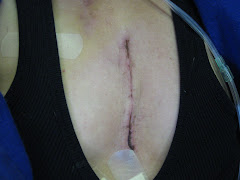
It causes the pressure in the pulmonary artery to rise far above normal levels. At the same time as the pressure rises, the walls of the blood vessels become thicker. This puts intense strain on the heart. Pulmonary hypertension can occur with or without an identifiable or known cause.
Diagnosis of primary pulmonary hypertension (PPH) typically requires several tests. It is often not detected in a routine clinical examination because many of the PPH symptoms are similar to other disease conditions of the heart and lung, such as shortness of breath, dizziness, weakness, swelling of the ankles and extremities, etc.
Pulmonary hypertension is characterized by elevated pressure in the artery connecting the heart and lung (pulmonary artery). The average normal pressure in this artery is 18 mm Hg, while for a patient with PPH, the average pressure is 25 mm Hg. In order to measure the pulmonary artery pressure directly, a heart catheterization is needed.
Primary Versus Secondary Pulmonary Hypertension
When a patient has elevated pulmonary pressure, it does not necessarily indicate a diagnosis of primary pulmonary hypertension. The elevated pressure can also be directly related to heart or lung disease. When pulmonary hypertension is caused by other factors, the disease is called secondary pulmonary hypertension. In order to specifically diagnose PPH, the doctor must rule out other causes of the elevated pulmonary pressure. Once these have been eliminated as causes, and no other direct cause can be determined, then the diagnosis is primary pulmonary hypertension. Other tests that are typically used to rule out other causes of elevated pulmonary hypertension include standard pulmonary tests, X-rays, Doppler Flow studies and ventilation-perfusion testing.
Primary Versus Secondary Pulmonary Hypertension
When a patient has elevated pulmonary pressure, it does not necessarily indicate a diagnosis of primary pulmonary hypertension. The elevated pressure can also be directly related to heart or lung disease. When pulmonary hypertension is caused by other factors, the disease is called secondary pulmonary hypertension. In order to specifically diagnose PPH, the doctor must rule out other causes of the elevated pulmonary pressure. Once these have been eliminated as causes, and no other direct cause can be determined, then the diagnosis is primary pulmonary hypertension. Other tests that are typically used to rule out other causes of elevated pulmonary hypertension include standard pulmonary tests, X-rays, Doppler Flow studies and ventilation-perfusion testing.
Diet Drugs and PPH
Use of diet drugs, such as Fen Phen, fenfluramine (Pondimin) and dexfenfluramine (Redux) have been known to cause primary pulmonary hypertension. These patients typically present with a defective heart valve. These heart valve defects can be detected with echocardiography, which is a non-invasive ultrasound examination of the heart. Patients with this known heart defect and primary pulmonary hypertension should be screened for previous treatment with these diet drugs. Some studies have suggested that diet drug patients have normal pulmonary artery pressure during rest, but abnormal levels during exercise. An exercise test during catheterization (described above) can be used to diagnose PPH for these patients.
Use of diet drugs, such as Fen Phen, fenfluramine (Pondimin) and dexfenfluramine (Redux) have been known to cause primary pulmonary hypertension. These patients typically present with a defective heart valve. These heart valve defects can be detected with echocardiography, which is a non-invasive ultrasound examination of the heart. Patients with this known heart defect and primary pulmonary hypertension should be screened for previous treatment with these diet drugs. Some studies have suggested that diet drug patients have normal pulmonary artery pressure during rest, but abnormal levels during exercise. An exercise test during catheterization (described above) can be used to diagnose PPH for these patients.






















No comments:
Post a Comment